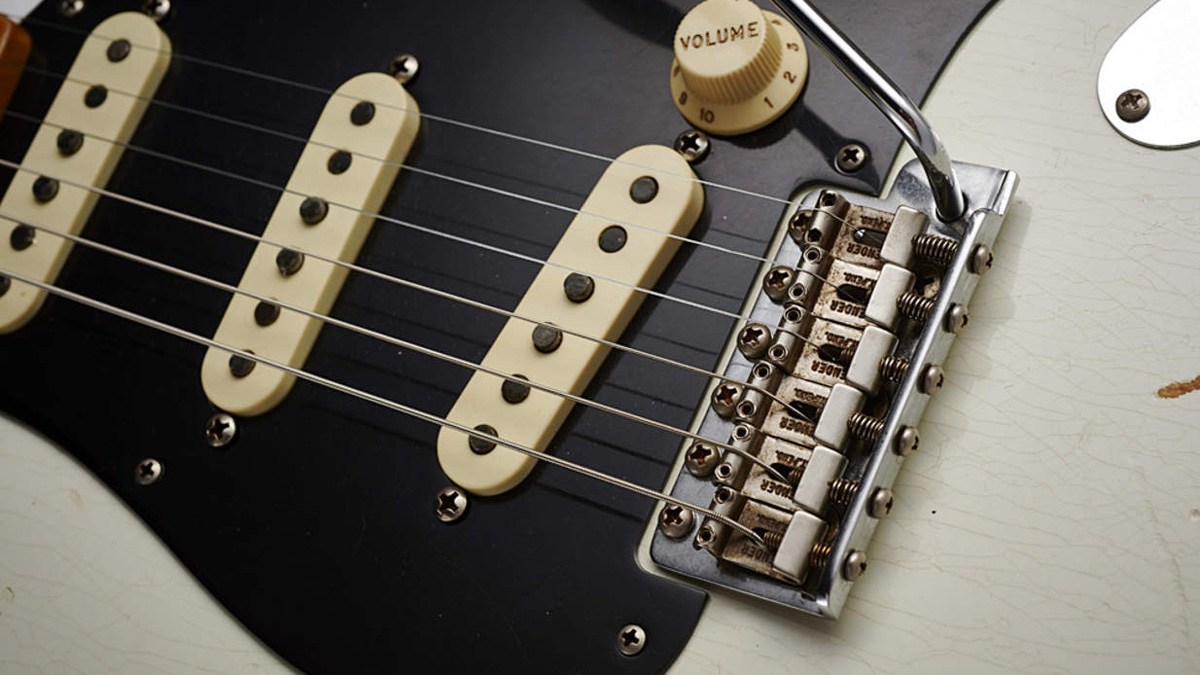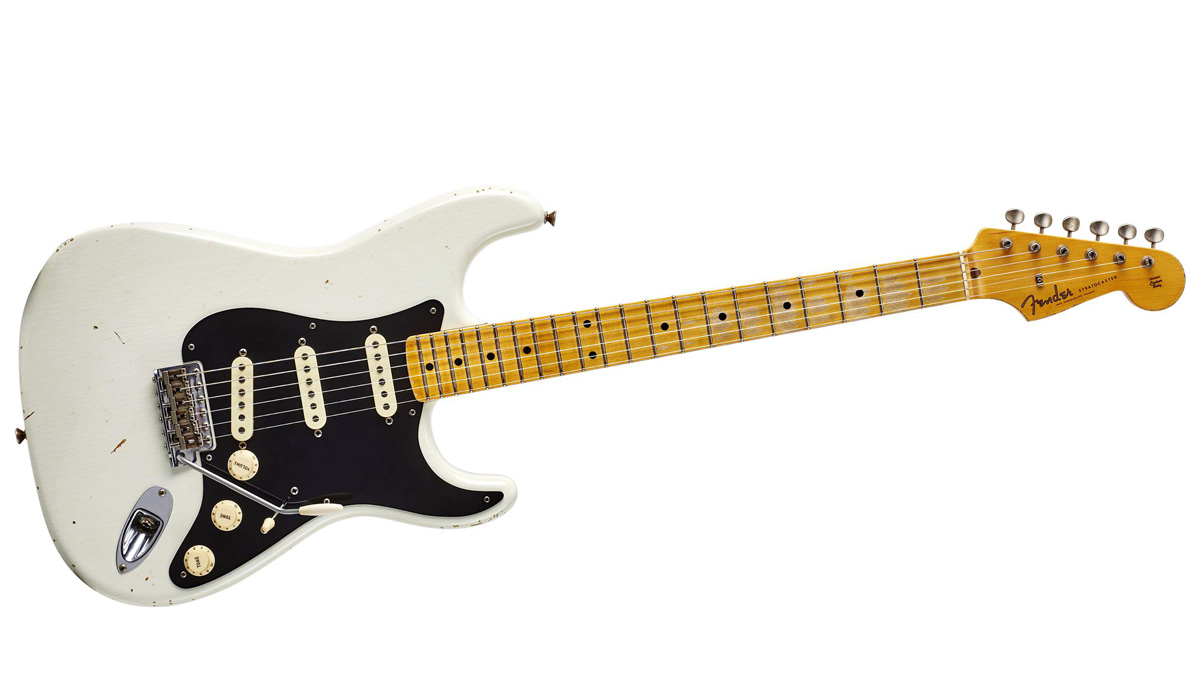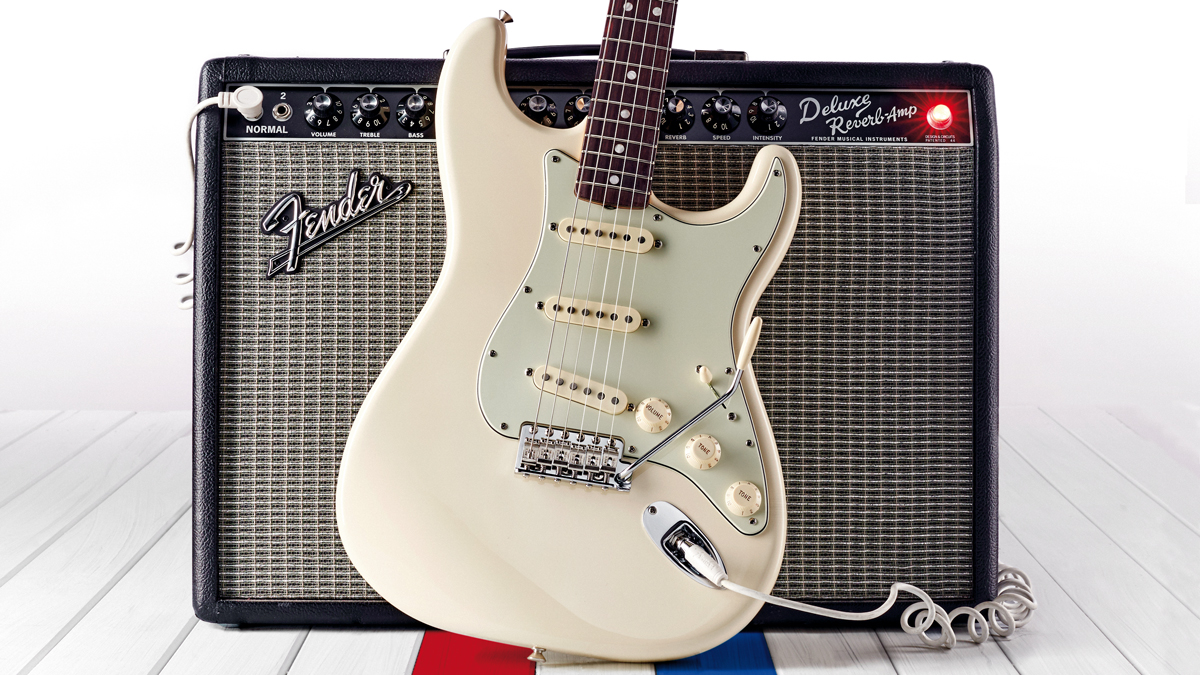MusicRadar Verdict
If you can afford it, we’d wager there are few players who wouldn’t choose a guitar at this level.
Pros
- +
Build, good weight, big neck profile and sounds, not least the muscular neck pickup.
Cons
- -
We might go for a five-way pickup selector and a tone control for the bridge...
MusicRadar's got your back
If you’re serious about your guitars, you’ll have played a Custom Shop Fender over the years and it’ll probably have been one that strongly references the past.
“It continues to be the heritage of Strats and Teles that drives the business,” says Simon Jacobs, Fender EMEA’s Custom Shop sales manager. “And, of those, the majority are probably 60s Strats - it’s what everyone wants.”
He’s got a point. There are plenty of new features and designs, but there’s something about an old Fender that continues to inspire us, especially when you can personalise the build to the extent currently offered by the Custom Shop.
To that end, Simon and his team commissioned seven of the Custom Shop’s Master Builders to conceive their own specific designs as the centre-piece of a European dealer roadshow that kicked off in early October 2018: “Rather than just having a lot of different-spec guitars on show, we kept it more focused and asked each of the Master Builders: ‘If you were going to grab a guitar to go to a gig on a Friday night, what would it be?’
“The thinking behind this was to make something that was interesting with a few curves, but wasn’t so far out there it wouldn’t be a genuine player’s guitar,” he continues. “It was meant to be something you’d happily grab and go off to your gig with: your preferred workhorse. It was a very loose brief, and the responses from the Master Builders has been quite varied.”
The resulting guitar falls into the Master Design category: “The Master Builder comes up with the build and aesthetic of the instrument,” continues Simon, “and that’s put out to what we now refer to as Custom- Built [previously Team-Built], essentially to hit a price point: a more affordable piece but with all the details and appointments a Master Builder would choose.”
Build
The term Master Design seems to have been used for various models, and even pickups over the years, but it was back in 2014 - the 60th Anniversary of the Stratocaster - that the term was applied to guitars designed by John Cruz (’63 Relic Stratocaster) and Todd Krause (’50s Relic Stratocaster in Moss Green). Todd’s latest Master Design again illustrates his preferences and, like the prior model, also has some electronic tweaks.
Want all the hottest music and gear news, reviews, deals, features and more, direct to your inbox? Sign up here.
It’s the neck here that is this guitar’s boldest statement. If you like big, big necks, this quoted ’55 soft V will be love at first feel. In fairness, it’s only very slightly bigger dimensionally than the recently-reviewed ’53 soft V profile of the Tele, but our left-hand is telling us different. Unlike the ’53 Tele, there’s no finish on the back of the neck, either; the maple already looks dirty, and won’t get cleaner, contrasted by the finish around the base and the back of the headstock. If we’re honest, it looks like someone has taken a piece of sandpaper and rubbed off the finish rather than it being worn away from years of use. Whatever, it feels great, especially if you live with your thumb around.

As with Todd’s previous Master Design, the Hand-Wound single coils have additional copper foil shielding along with foil and a thin metal control plate on the back of the scratchplate. The cavities are screened with conductive paint, too, but the circuit is deliciously old-school with a three-way pickup selector, single (non- boutique) 0.1microfarad cap and CTS 250k pots, and, as wired, there’s no tone control for the bridge pickup.
The fretwire gauge is slighter smaller here, but the setup is just as sharp with quite a lot of tilt to the vibrato, which, using three springs, gives an up-bend of approximately four semitones on the G string and just a shade under a full tone on the high E. The small length screw-in arm feels perfect under your right hand, and although this is an original-style vibrato, the stability fresh out of the case is pretty good.
Feel and Sounds
Somewhere, someone has probably developed an algorithm that you could put in all the details of your Strat and Tele and it’d tell you what it’s going to sound like. In the meantime, ‘different’ is a good starting point. We are continuously amazed how no two Strats seem to sound the same, even if their specification is similar. Quite often it’s as much about the character.
For example, the ’56 Strat’s neck pickup proves just about as muscular as its big- boned neck: it’s thick and woody and when people ask why you’d spend £4k on a Strat, well, have a listen here. There’s no overwound power; it’s more like you’ve upped the size of your speaker cabinet. The three-way switch does mean you have to lodge it to get those classic in-between sounds, which can be a little touch and go, especially live, and the ’56 then almost focuses on the Strat’s trio of primary voices.
On one hand, the bridge does sound a little thin, though with a slightly rounded brightness yet quite visceral in its attack. As ever, the middle pickup sits on the fence: lighter than the neck, beefier and less sharp than the bridge. Whatever each of the subtleties of the design brings, the combination is quite something. The neck won’t be for everyone, but that’s the beauty of the Custom Shop proposal: you choose.
At £4k this is no impulse buy and that money would bag you an exceptional guitar from many, many makers. Could you do that Friday night gig with a lesser Fender? Of course, but that’s not the point. If you can afford it, we’d wager there are few players who wouldn’t choose a guitar at this level and with the right name on the headstock. The only problem is the colossal choice. Download the 2018 Custom Guitar Design Guide and get started!
Dave Burrluck is one of the world’s most experienced guitar journalists, who started writing back in the '80s for International Musician and Recording World, co-founded The Guitar Magazine and has been the Gear Reviews Editor of Guitarist magazine for the past two decades. Along the way, Dave has been the sole author of The PRS Guitar Book and The Player's Guide to Guitar Maintenance as well as contributing to numerous other books on the electric guitar. Dave is an active gigging and recording musician and still finds time to make, repair and mod guitars, not least for Guitarist’s The Mod Squad.


